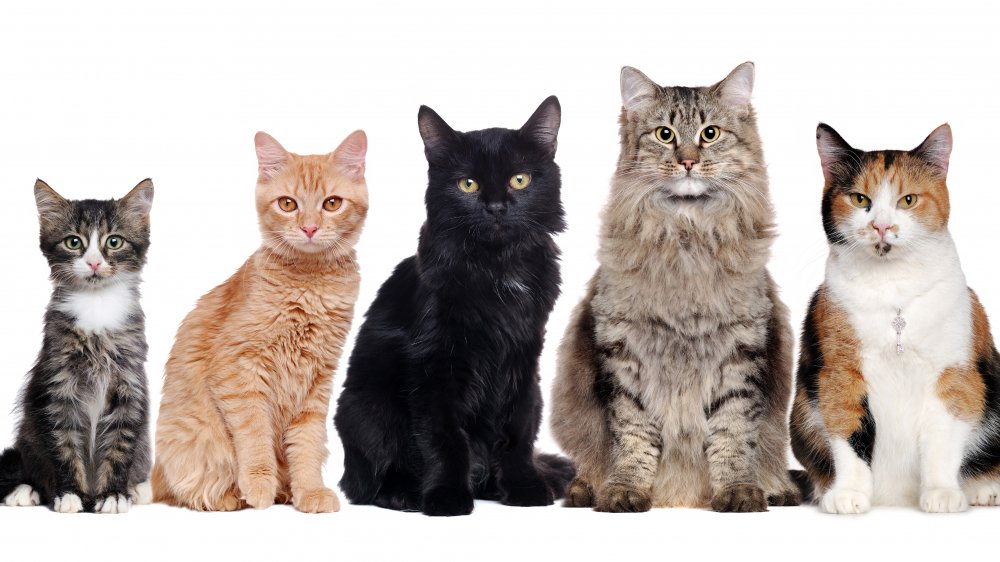How Many Different Cat Breeds Are There In The World?
Humans naturally categorize things. What things? Everything — faces, places, races, phases of matter, foods on a platter, blood splatter patterns, and, of course, cats. You can't even spell 'category' without 'cat.' People divide felines by how large they are, how smart they aren't, how long they live, and how hard it is to live with them. People even categorize cats by how dog-like they seem. So naturally, humans would also lump their whiskered companions into separate breeds. But that might be easier said than done.
Live Science points out that it's not always easy to draw clear-cut distinctions between subgroups of animals in a species. For instance, even though domestic dog breeds tend to look wildly different from each other, there are wildly different ways of weighing those differences. In 2017, the American Kennel Club divided canines into 190 distinct breeds while the World Canine Organization grouped them into about 340 breeds. But as of this writing, the American Kennel Club acknowledges 193 breeds, and according to Hill's Pet Nutrition, as of October 2019, the World Canine Organization recognized 360 breeds. Cat breeds don't come close to showing the same degree of physical variety as dogs, so how do you meaningfully categorize cats, and why do they make it so hard to do?
Born to be wildcat?
The difficulty of parsing cat breeds partly lies in felines' evolutionary history. Hill's Pet Nutrition notes that cats inserted themselves into human civilization about 8,000 years ago. They didn't woo humans cute puppy-cat eyes or charm people by begging for belly rubs. Rather, they did what cats do best: kill. Specifically, they killed mice that were eating the grain people relied on for food. While their canine counterparts went on to be bred for all sorts of purposes such as herding and hunting, cats generally served two main purposes, per Live Science: companionship and "pest control," which might explain why you don't see seeing-eye-cats walking around.
People didn't begin selectively breeding cats to meet particular needs until the 19th century. As a result, there are far fewer distinctly different cat groups and human groups disagree on how many there actually are. As of February 2019, the Cat Fanciers' Association grouped felines into 45 distinct breeds. By contrast, the International Cat Association acknowledges 71. So just go with your favorite number, even if it means claiming there are negative-three cat breeds.

